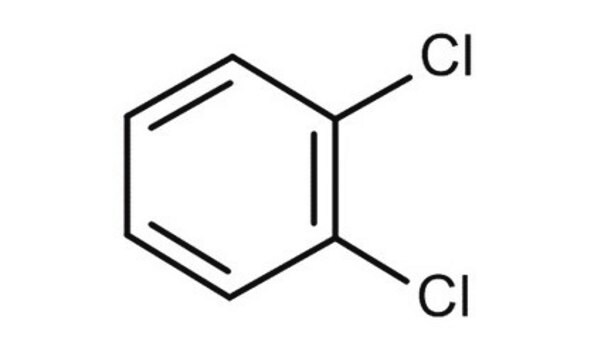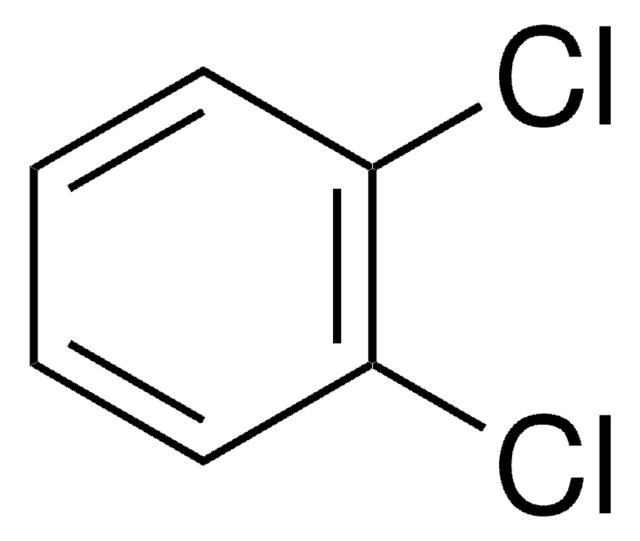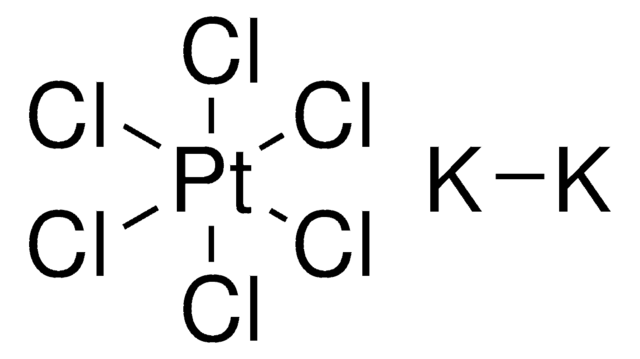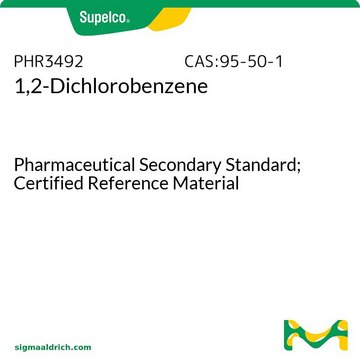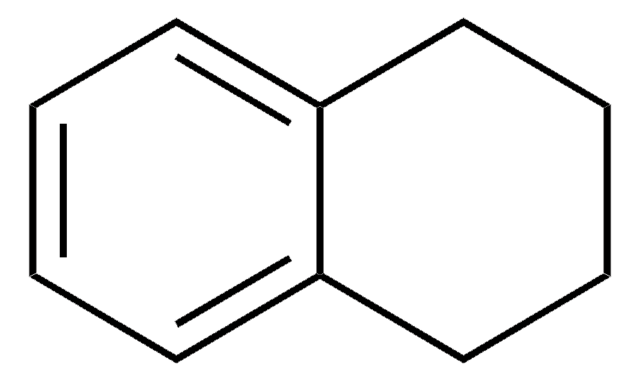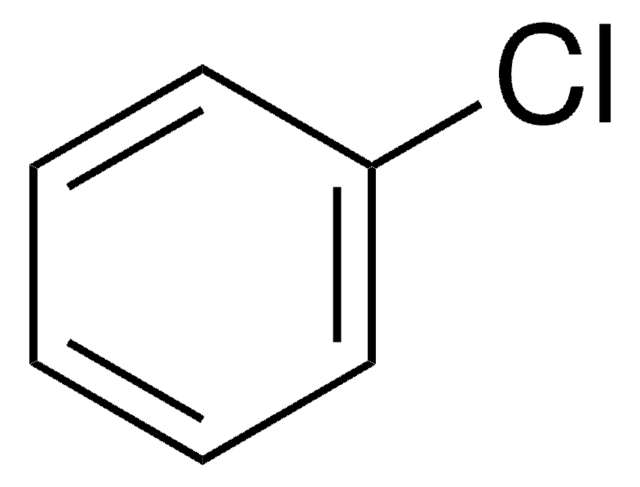D56802
1,2-Dichlorobenzene
ReagentPlus®, 99%
About This Item
1.6 mmHg ( 35 °C)
Productos recomendados
vapor density
5.1 (vs air)
Quality Level
vapor pressure
1.2 mmHg ( 20 °C)
1.6 mmHg ( 35 °C)
product line
ReagentPlus®
assay
99%
form
liquid
autoignition temp.
1198 °F
expl. lim.
9.2 %
refractive index
n20/D 1.551 (lit.)
bp
178-180 °C (lit.)
mp
−18-−17 °C (lit.)
density
1.306 g/mL at 25 °C (lit.)
SMILES string
Clc1ccccc1Cl
InChI
1S/C6H4Cl2/c7-5-3-1-2-4-6(5)8/h1-4H
InChI key
RFFLAFLAYFXFSW-UHFFFAOYSA-N
¿Está buscando productos similares? Visita Guía de comparación de productos
Application
- In the Wohl-Ziegler bromination of methoxyimino-o-tolyl-acetic acid methyl esters.
- To synthesize poly(butyleneterephthalate) copolyesters via polycondensation.
Legal Information
¿No encuentra el producto adecuado?
Pruebe nuestro Herramienta de selección de productos.
signalword
Warning
Hazard Classifications
Acute Tox. 4 Inhalation - Acute Tox. 4 Oral - Aquatic Acute 1 - Aquatic Chronic 1 - Eye Irrit. 2 - Skin Irrit. 2 - Skin Sens. 1B - STOT SE 3
target_organs
Respiratory system
Storage Class
6.1C - Combustible acute toxic Cat.3 / toxic compounds or compounds which causing chronic effects
wgk_germany
WGK 2
flash_point_f
150.8 °F - closed cup
flash_point_c
66.0 °C - closed cup
Elija entre una de las versiones más recientes:
¿Ya tiene este producto?
Encuentre la documentación para los productos que ha comprado recientemente en la Biblioteca de documentos.
Los clientes también vieron
Nuestro equipo de científicos tiene experiencia en todas las áreas de investigación: Ciencias de la vida, Ciencia de los materiales, Síntesis química, Cromatografía, Analítica y muchas otras.
Póngase en contacto con el Servicio técnico